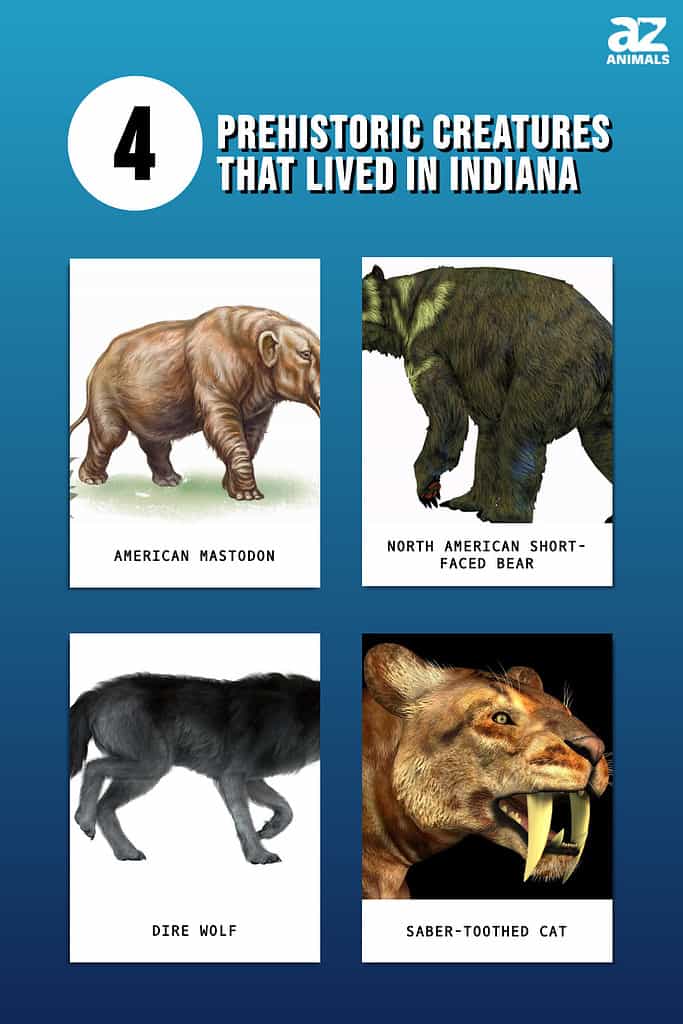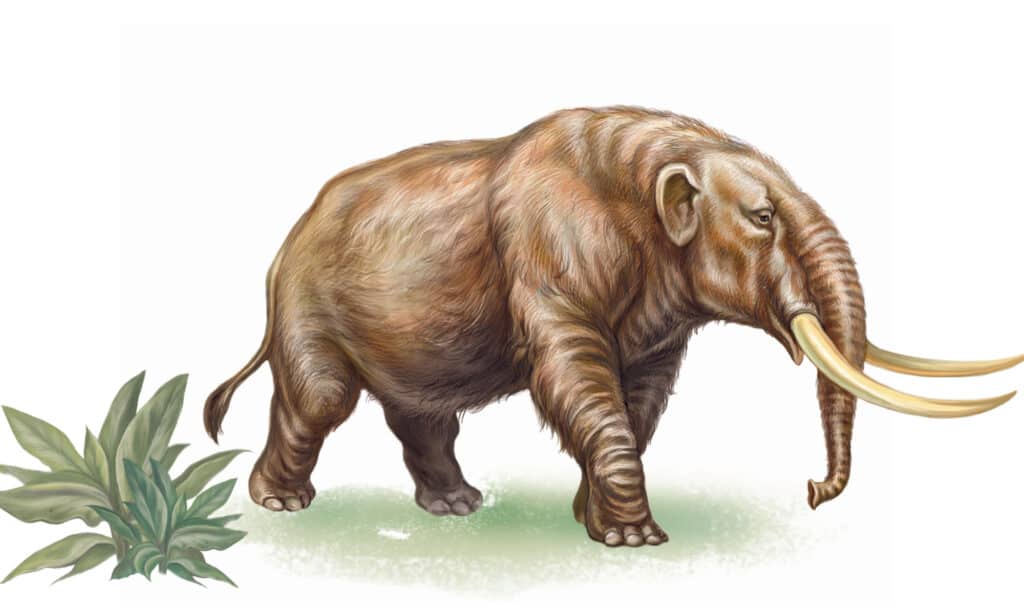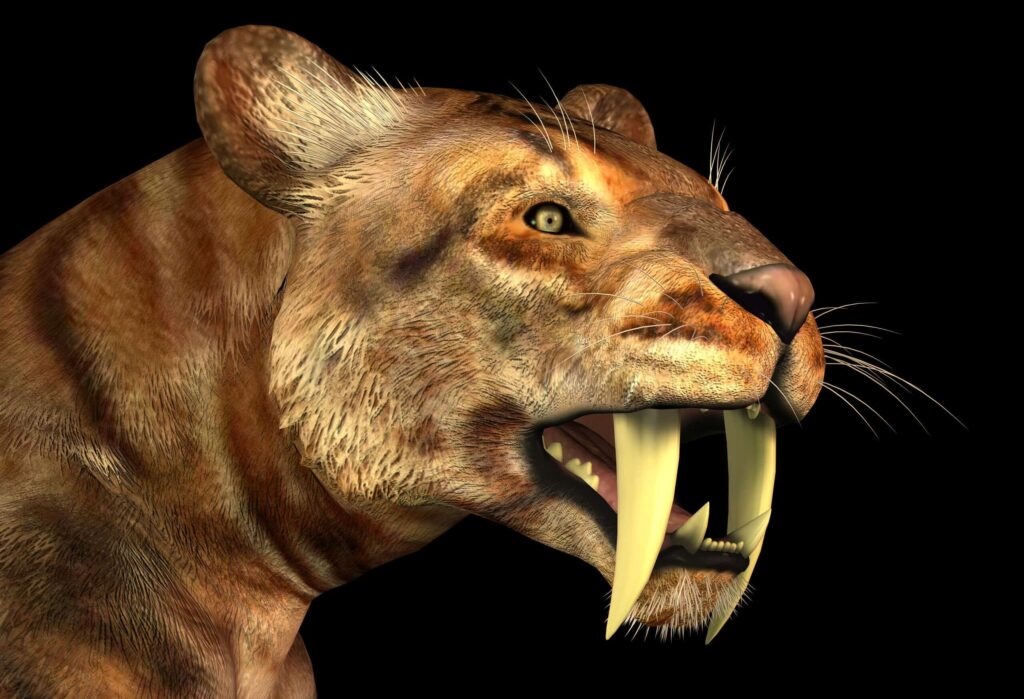Indiana was once the home to many interesting creatures, and it is currently undergoing a revitalization process to bring back American bison. Long ago, though, large mammals and dinosaurs roamed this part of the United States. Yet, we don’t know much about the dinosaurs that lived in Indiana. How can that be?
We’re going to take a brief look at the long history of Indiana and tell you why scientists have found no trace of dinosaurs that roamed this part of the country millions of years ago.
What Is Indiana’s State Dinosaur?
Indiana does not have a state dinosaur. The reason that Indiana lacks a state dinosaur is rather simple: no dinosaur fossils have ever been found in the state. Yet, that doesn’t mean Indiana lacks a state fossil, a measure that most states without dinosaur fossils take.
Indiana’s state fossil is the American mastodon. This fossil was named Indiana’s state fossil on July 1, 2022, but the idea had been up for debate for almost a decade before it was made official. The American mastodon is a popular choice for state fossils in this part of the U.S. After all, Michigan also named the American mastodon as its state fossil.
Meanwhile, members of the Indiana Geological & Water Survey advocated for the dire wolf, a sturgeon, and other fossils to become the state fossil to no avail.
Why Is There No Evidence of Dinosaurs That Lived in Indiana?
Dinosaurs almost certainly lived in Indiana, but scientists have no evidence of them living in the area. Fossil evidence of dinosaurs that lived in Indiana is non-existent. A few reasons exist for the absence of dinosaur fossils.
For one thing, much of Indiana was under a shallow sea until almost 300 million years ago. Later, the composition of the soil, the eroding power of water, and other factors ensured that the sediments in Indiana never deposited but eroded.
Later, after the dinosaurs walked the planet, the entire fossil record from the Mesozoic era and even slightly before then was erased. How could this happen? Glaciers that formed between 2 to 3 million years ago during the most recent Ice Age completely wiped away the rock layers that could have contained dinosaur fossils.
In fact, some of the youngest remaining bedrock is about 300 million years old. The sediment material above the bedrock contains materials that are only a few million years old. So, it’s impossible to know what was in the layers of rock that were destroyed by glacial advances and other erosion.
We can’t know what specific dinosaurs lived in Indiana. Unfortunately, we cannot look to neighboring states in this region, either. The fossil records of all the states for hundreds of miles have been wiped clean.
Yet, we do know that some prehistoric creatures lived in Indiana. Let’s take a look at some of those.
What Are Some Prehistoric Creatures That Lived in Indiana?

Although we don’t know about the dinosaurs that lived in Indiana, we do have fossil records of some other interesting vertebrates. Take a look at the various animals from the Cenozoic Era. See how Indiana has a rich history of hosting some very large, powerful, and deadly creatures!
1. American Mastodon
The American mastodon was a very large elephant-like creature that lived in North America until its extinction between 10,000 to 11,000 years ago. Their fossils have been dispersed throughout many parts of North America and Central America.
These massive creatures stood about 10 feet at the shoulder and used their long, curved tusks to fend off predators and battle each other. You may recall that the American mastodon is the state fossil of Indiana!

Mastodons were approximately the size of modern
elephants
.
©Liliya Butenko/Shutterstock.com
2. North American Short-Faced Bear
The North American short-faced bear, or the giant short-faced bear, was a predator that would have scared off any grizzly in the U.S. This bear stood about 6 feet tall at the shoulders when it was walking on all fours.
When the bear stood up on its hind legs, it could tower over prey at a height of nearly 10 feet. Like bears today, the giant short-faced bear was incredibly swift. They were capable of hitting speeds of between 35 and 40 mph when they needed to catch prey!

The short-faced bear weighed 2,000 pounds or more!
©iStock.com/CoreyFord
3. Dire Wolf
Dire wolves were popularized as a result of their name being used in A Song of Ice and Fire. Yet, the real mammal wasn’t all that terrifying. They were about the size of the largest gray wolves rather than creatures the size of bears. The first dire wolf fossils ever discovered were found in Indiana in 1858.

Dire wolves were roughly the size of the extant gray wolf, but with a heavier build.
©Catmando/Shutterstock.com
4. Saber-Toothed Cat
Saber-toothed cats were very large and deadly cats. They’re primarily recognized by their large, protruding canines that could measure upwards of 7 inches long. Fossils of Smilodon fatalis, a true saber-toothed cat, have been found in some parts of Indiana. These animals are believed to have evolved about 40 million years ago!
As you can see, Indiana had a diverse set of interesting creatures that lived throughout its history.

The saber-toothed cat gets its name from its enormous, saber-shaped teeth.
©iStock.com/CoreyFord
Where Can You See Fossils in Indiana?
Although we have no evidence of dinosaurs that lived in Indiana, several other interesting fossils have been found in the state.
If you would like to see some of the fossils that have been collected in Indiana, your best bet is to go to the Indiana State Museum. Located in Indianapolis, this museum has several exhibits of fossilized creatures. Some of the exhibits cover the ancient seas that covered Indiana. They feature fossils that are hundreds of millions of years old.
Other exhibits that feature Ice Age animals and more are also available. You’ll find casts of mastodons, measure up against the biggest animals that roamed the area, and see fossils of ancient animals that roamed Indiana.
The museum is open from Wednesday to Sunday between 10 a.m. and 5 p.m. Make sure to check their website or call ahead to get additional information about exhibits so that you can see what is going to be available and on display when you get there!
The photo featured at the top of this post is © scigelova/Shutterstock.com
Thank you for reading! Have some feedback for us? Contact the AZ Animals editorial team.






